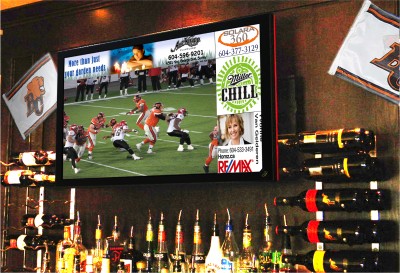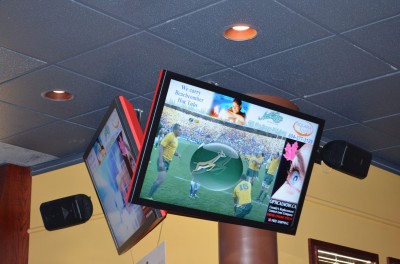
Digital out-of-home (DOOH) networks are drawing a huge, verifiable number of viewers in restaurants, bars and other venues.
Choosing the right hardware and software
Hardware and software technologies are closely related when deploying a DOOH campaign, as they lay the foundation upon which the campaign’s content will be presented to the public.
DOOH hardware includes the displays themselves, the media players that deliver content, the cabling and other components supporting the distribution of content to individual digital signs. The displays need to offer not only sufficient resolution and durability, but also the capability for external control via general-purpose interface (GPI) triggers or scripts, depending on the campaign’s application requirement.
The media players are, essentially, personal computers (PCs) with a small enough form factor for inconspicuous deployment within or behind the displays’ structure. Their computing and graphics processing capabilities support the simultaneous playback of multiple media files, including video, audio and animation, and the generation of other screen elements, such as text crawls. In many cases, they offer both wired and wireless Ethernet connectivity, Universal Serial Bus (USB) ports and connectors to relay control commands, e.g. to turn a display on or off.
Digital signage software generally falls into two distinct areas. The first involves editing applications for assembling and arranging various types of media and scheduling their playback, along with media player software to retrieve, store and manage files in line with the playback schedule. The second area involves server software, which operates via Internet Protocol (IP) connections to control DOOH content distribution across dozens, hundreds or even thousands of displays, along with monitoring those displays and performing diagnostics.
Successful deployment
Deployment begins with important decisions about where and how to position the displays, but also involves ongoing network management.
Understanding the target audience’s traffic patterns, habits and demographics will help make it easier to decide where to deploy various types of displays. In a hotel and conference centre, for example, data about how visitors and guests use the space can be used to determine how to position digital signs for wayfinding, digital meeting room schedule screens and self-serve interactive kiosks.
The goal of deployment is to deliver the right information at the most appropriate location. Understanding local demographics may also affect the size and orientation of screens within a space.

The key to Solara360’s business model is the playback of ads in an L-shaped space along two sides of each screen.
Successful deployment also depends on deciding, early in the process, who will be responsible for managing the media players, the displays and the network in general. Some digital signage network plans have been stopped dead in their tracks by conflicts between information technology (IT) and communications departments.
This is particularly true when using a Local Area Network (LAN) or Wide Area Network (WAN). Well-intentioned IT professionals, motivated by the need to protect the security and integrity of these networks, often claim responsibility for digital signage deployment without first considering the sheer amount of work that will entail. Some even decide to build a proprietary system from scratch, adding further burdens of time and complexity, to the point where the digital signage network may never be deployed.
Conversely, many media and communications professionals, who may be well-equipped for content creation and messaging, lack the technical expertise to oversee a successful network deployment.
Given these factors, it is becoming more common for organizations to turn to an outside specialist to deploy, manage and monitor their digital signage network, separately and distinctly from their IT network. This trend has helped them rise from digital signage failure and achieve new success.





